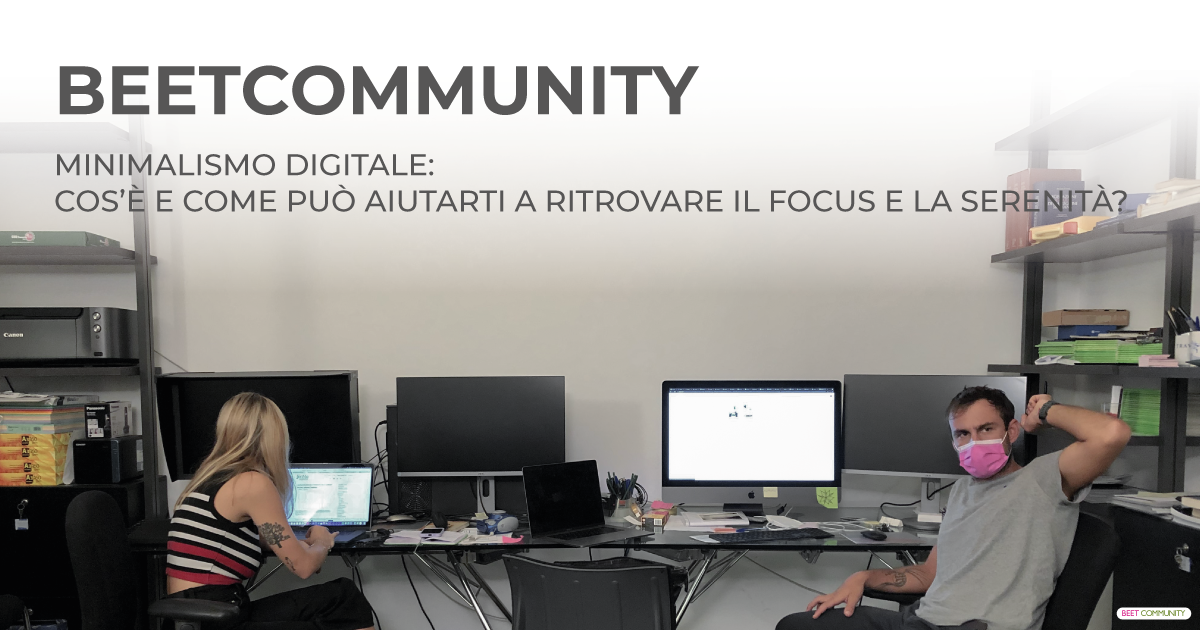What is Digital Minimalism? Here’s today’s minimalist philosophy that can help you regain focus and peace of mind in a world full of digital noise

What is Digital Minimalism? Here’s today’s minimalist philosophy that can help you regain focus and peace of mind in a world full of digital noise
Understanding what digital minimalism is and how to apply it to your life can truly help you regain focus and peace of mind. Digital minimalism is nothing more than a modern reworking of the minimalist philosophy: seeking out what truly adds value, joy, and satisfaction to your daily life and getting rid of everything else that’s just accessory, useless, or even toxic.
Minimalism vs. Maximalism
Hyperconnectivity is a reality that defines everyone’s life—an evolution of how we live, interact, inform ourselves, relate, and learn. Today, everything can be done online because there’s an app for everything, and our smartphones are full of them.
Digital technology has filled our daily lives, in many ways positively—removing spatial barriers or providing access to infinite resources—while in others quite negatively.
It’s a fact that
we spend much of our time online, scrolling through feeds, switching from one tab to another, opening hundreds of notifications to keep up with the latest updates. It’s easy to get trapped in this virtual world, taking time and energy away from the real one.
What is Digital Minimalism and how did it start?
We bet that at least once (but maybe also two, three, four times…) in recent years, you’ve felt overwhelmed, stressed, or anxious from all the online stimuli and at the same time afraid of missing out on something happening online.
Reclaiming your time and space in the real world,
returning to the ability to concentrate and live without worrying about what’s happening online, is the not-so-simple challenge that many feel the need to take on—the challenge
that Prof. Cal Newport sought to address by reworking a philosophy and building a method around it:
Digital Minimalism.
When you think about it, what Newport was able to do was nothing more than look at what was happening to people around the world and apply a little common sense to bring things back to balance. Newport took the minimalist idea of identifying what’s enough to live well and applied it to digital technology: the result was finding the key to refocusing your life in a world increasingly full of digital noise.
But Newport’s greatest merit wasn’t just theorizing a philosophy to improve individual well-being; it was bringing his insight to a practical level even before formulating a theory.
His book (Digital Minimalism: Choosing a Focused Life in a Noisy World, published by Roi Edizioni) is the result of a
study conducted on a sample of 1,600 people (a small part of his
followers) aimed at helping them regain that balance between real and digital life that would allow them to no longer feel overwhelmed and to take back control of their existence. The study involved a 30-day period during which the
followers had to
break their dependence on social media and smartphones by carrying out a process of digital decluttering.
The result of this experiment was the emergence of the first
digital minimalists, happy people who had regained their peace of mind because they had freed themselves from the need to stay constantly connected and updated no matter what they were doing.
Thanks to this experiment, these people became aware of their relationship with technology and re-evaluated it, learning to take only the best from technological innovation. In short, they learned to make conscious and thoughtful choices about which tools to use, how much, when, and for what purposes. The most important thing, in fact, is to protect your mental space from the invasion of technology and its algorithms designed to capture all your attention and make you spend as much time as possible in the apps.
The 9 Pillars of Digital Minimalism
And it was precisely the results of this experiment that formed the basis for Newport’s book/essay and the 9 pillars that shape digital minimalism.
- Being left out isn’t always a bad thing. Social network apps with their notifications are designed to create the famous FOMO—fear of missing out. Literally, the “anxiety of missing something”: whether it’s an event, news, or a social interaction, we’re driven to fear being left out, developing a compulsion to keep checking what’s new. So what to do to break free from this loop? Choose to deliberately stay out by turning off app notifications.
- Less is better. The Pareto principle applies perfectly to digital minimalism: you can consciously give up 80% of digital stimuli and keep only that 20% of apps and online activities that really add value and improve your quality of life.
- Focus on the values that are essential to you. Try an experiment: ask yourself what really matters to you; once you’ve done that, identify the top 5 most important values, then look at your smartphone’s home screen and ask yourself which apps truly reflect those essential values. Found them? Good, now delete everything else.
- What matters will emerge. Not everything we do online is productive or valuable, but some activities stand out for their greater value and better results. Focus only on these impactful activities and eliminate the rest.
- Digital noise is stressful. How annoying is it to hear your phone buzzing constantly or to see the screen lighting up for a new notification, message, or email? If you can reduce your screen time to only activities and apps that create value for you, you’ll immediately notice how your mental state will suddenly be calmer and more peaceful, even rediscovering time you thought you didn’t have.
- Attention is a scarce and fragile resource. By living a life that’s always connected and always on, our attention is constantly fragmented into a thousand things and easily lost when trying to focus on one activity. So learn this: “Your life is what you pay attention to.”
- The best online activities are those that help us live better offline. It might sound incredible, but often the apps and digital services that truly add value to our lives are the ones that help us live better in the real world. Think of Google Maps, apps for learning a new language, or weather apps.
- Be suspicious of tools that solve problems that didn’t exist before those tools came along. Ask yourself if an app you use regularly solves a problem you had before you started using it or before it even existed. If not, it’s not a valuable app—because instead of solving a real problem, it creates one and then solves it for you. And that’s definitely not essential for living better, don’t you think?
- Creativity beats consumption every single day of the week. What brings us the most satisfaction is spending time and energy creating something of our own and original. So invest your time in online activities that help you build something useful and skip the ones that just push you to consume.
Try following these principles; you’ll probably find that applying the
pillars of digital minimalism to your life will help you rediscover a more balanced lifestyle, one that’s more connected to reality, where during a long conversation you won’t feel like checking your phone for notifications; where you won’t feel the compulsive need to share a great experience online; where the fear of missing out will be a thing of the past.
For those living an inevitably and necessarily always-connected life, like
digital nomads, being able to change their mindset and
embrace digital minimalism can truly change their life for the better.





